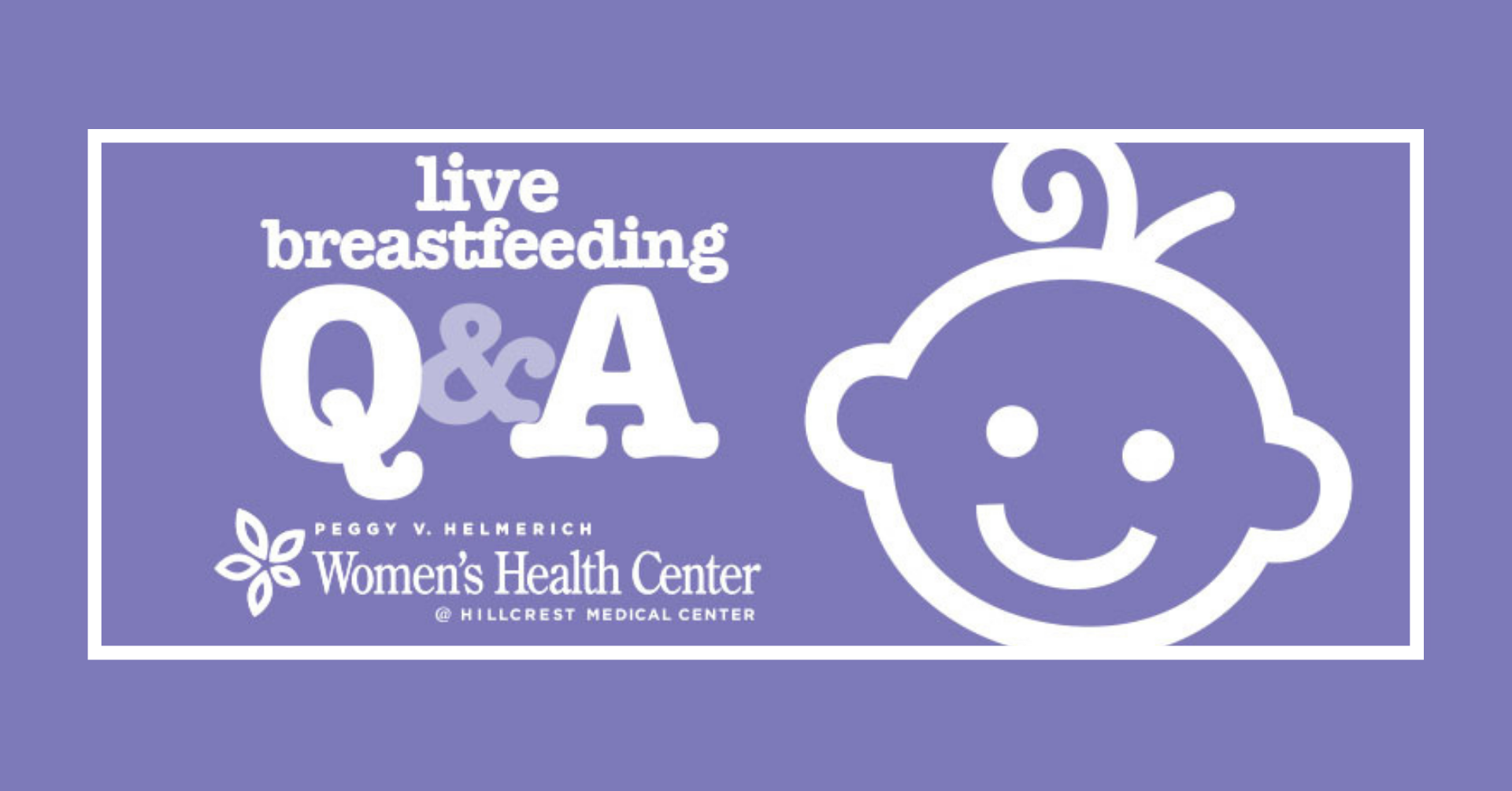
August is World Breastfeeding Month. In recognition, the Hillcrest Medical Center lactation consultants Rebecca Onyirioha, RN, MSN, IBCLC; Karen Stockwell, RN, BSN, IBCLC; and Roberta Tyler, RN, BSN, IBCLC, answered several questions about breastfeeding from a recent Facebook live event. Here is a summary of those questions asked during the session:
Q: How do I know that my baby is getting enough to eat?
A: That’s a common question we get. Some of the best ways to know:
• Dirty and wet diapers, especially dirty diapers in the first few days.
• Being content after a feeding. If the baby falls asleep, that’s a great sign.
• Weight. All babies lose weight after birth, but we like to see them back at their birth weight by about 10 days to two weeks.
And, you’ll hear your breast is softer as your baby is swallowing. At the beginning of the feeding, they might be kind of tense then they’ll begin to relax.
Q: Do you have any tips for building up a breastmilk freezer stash while on maternity leave before going to work or my kid going to daycare?
A: You make the most breast milk, typically, when your breasts are fuller. So, usually early morning time, if you pump after the baby feeds. If you’re not having to supplement the baby with your own pumped milk, start storing that milk. You can pump any time during the day but your breasts are going to be fuller in the morning, so you’ll get more milk. Just be sure and date it because your milk changes as your baby grows.
Q: My newborn is having trouble latching. What can I do?
A: Come see us in our outpatient clinic. We want to help you once you get home. The number is 918-579-8018.
If you are having problems getting your baby to latch, try latching when baby is nice and calm. Put your baby skin-to-skin with you. Sometimes that’ll really kind of help settle him or her down.
• Make sure baby’s chin isn’t down. Remember newborn heads are heavy for them.
• Bring the baby to breast and don’t lean into him/her.
• Position your nipple near the roof of the baby’s mouth and bring the baby on with a nice, wide-open mouth.
• Don’t rush.
• Gently tickle their top lip. When they lift their chin up and open wide, then you pull the baby onto the breast.
Also, keep your baby cupped in close. Snuggle your baby and then make sure you’ve got a pillow to support your arm.
If those things don’t work or if your breast is too full, you may need to hand express or pump a little bit to soften up the nipple and the areola so the baby can have something more to grab on to.
You want it to feel like a strong suck but it’s not supposed to feel miserable like a bite or a pinch. And, if we can’t get the baby to latch, we would love to talk with you either over the phone or in person.
Q: How often should I feed my baby?
What we say is eight or more in 24. That is at least eight breast feeds or milk removals by pumping within a 24-hour period. But, basically, you want to go by your babies feeding cues, whether your baby is awake, trying to suck their fingers or fist or doing something with their mouth. Another cue is if you’re holding your baby, your baby is rooting or searching on you.
For additional questions and resources, call the Hillcrest MilkLine at 918-579-8018.
